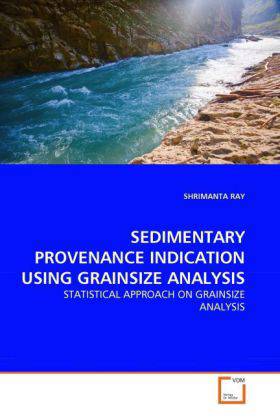
- Afhalen na 1 uur in een winkel met voorraad
- Gratis thuislevering in België vanaf € 30
- Ruim aanbod met 7 miljoen producten
- Afhalen na 1 uur in een winkel met voorraad
- Gratis thuislevering in België vanaf € 30
- Ruim aanbod met 7 miljoen producten
Zoeken
SEDIMENTARY PROVENANCE INDICATION USING GRAINSIZE ANALYSIS
STATISTICAL APPROACH ON GRAINSIZE ANALYSIS
Shrimanta Ray
Paperback | Engels
€ 65,45
+ 130 punten
Omschrijving
The siliciclastic rocks of Paleoproterozoic Supracrustal Kolhan Group are more or less persistently widespread over much of West Singhbhum, Jharkhand. They confined by four separated shallow intracratonic basins, the area in between, being mainly occupied by lower lava, tuffaceous rocks, granites and banded iron formation belonging to the older Iron-Ore Group. It exhibits an extensive development of conglomerate and sandstone with the eastern passive margin of the Singhbhum Granite which progressively grades upward to limestone and shale towards western margin. The occurrence of Kolhans as detached outliers of N-E unconformity with the Singhbhum Granite and further south western part of the area, suggests wide extent of the epicontinental Kolhan sea in the past. Recent investigation by several workers have revealed many useful information regarding the depositional environments. Here petrographic study including grain size, modal and heavy mineral analysis is mainly useful to understand the provenance and pattern of deposition of the Kolhan sandstones.
Specificaties
Betrokkenen
- Auteur(s):
- Uitgeverij:
Inhoud
- Aantal bladzijden:
- 60
- Taal:
- Engels
Eigenschappen
- Productcode (EAN):
- 9783639321517
- Verschijningsdatum:
- 18/02/2011
- Uitvoering:
- Paperback
- Afmetingen:
- 152 mm x 229 mm
- Gewicht:
- 100 g

Alleen bij Standaard Boekhandel
+ 130 punten op je klantenkaart van Standaard Boekhandel
Beoordelingen
We publiceren alleen reviews die voldoen aan de voorwaarden voor reviews. Bekijk onze voorwaarden voor reviews.








